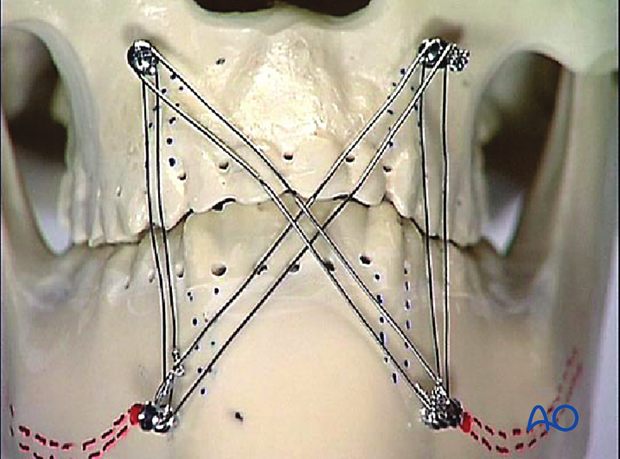MMF
1. Principles: general considerations
Internal fixation techniques in the dentate patient begin with re-establishing the occlusion, ensuring maintenance of preoperative occlusal status. There are several techniques to provide maxillomandibulary fixation (MMF). Many surgeons agree that the gold standard for establishing MMF is the use of arch bars. However, there are various methods of MMF that can be used in specific clinical situations.
Standard MMF methods are:
- Arch bars (described in this text)
- Ernst ligatures
- Bone supported devices including intermaxillary fixation (IMF) screws, hanger plates, and inter-arch miniplates
- Interdental wires
There are other wire fixation methods such as Ivy loops, Gilmer wiring, Stout wiring, and Kazanjian buttons, to name but a few.
Teaching video
AO Teaching video on maxillomandibulary fixation (MMF)
Protection from stick injuries
One pitfall when using arch bars is the risk of contamination of bloodborne infection from patients. Passing the wires to secure the arch bar can result in a puncture or tear in the surgeon's glove and the possibility of disease transmission to the surgeon.
Universal infection control shall be ensured for every patient, regardless of the disease status of the patient. Adequate protective barriers, as well as techniques, are essential to prevent prick accidents.
Use of double gloves. The lower number of perforations in the inner gloves demonstrate the effectiveness of double gloving.
- When the outer glove is torn
- When you see wetting beneath the outer glove
- Many surgeons recommend a change of gloves every 120 mins
- Alternately, consider changing gloves after every arch
- Whenever possible, try to implement MMF in a surgical setting with an assistant
- Pay attention to sharps
- Try to exercise non-touch technique with wires, grasping the wires with wire twisters only and not touching them with fingers
- Loose ends should always be grasped at the tip as not to leave a wire tip "open."
- Cut wire pieces should be discarded into a sharps container
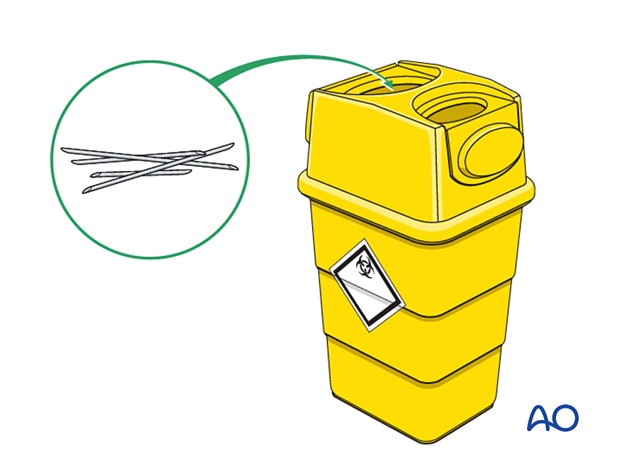
Preparation
Check occlusionBefore inserting the arch bars, check the occlusion. There should be full interdigitation of the teeth with regular contacts.
Determine if the patient has a normal occlusion or a preexisting malocclusion before taking the patient to the operating room.
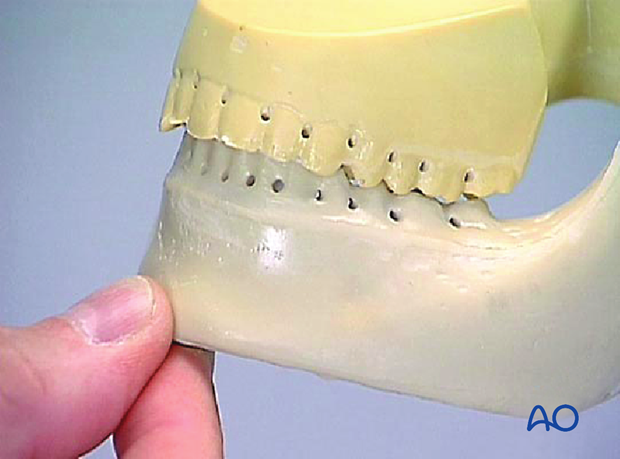
The prefabricated arch bar must be adjusted in length and contoured to fit the dental arch. The arch bar should not damage the gingiva.
The arch bar should be placed between the dental equator and the gingiva.
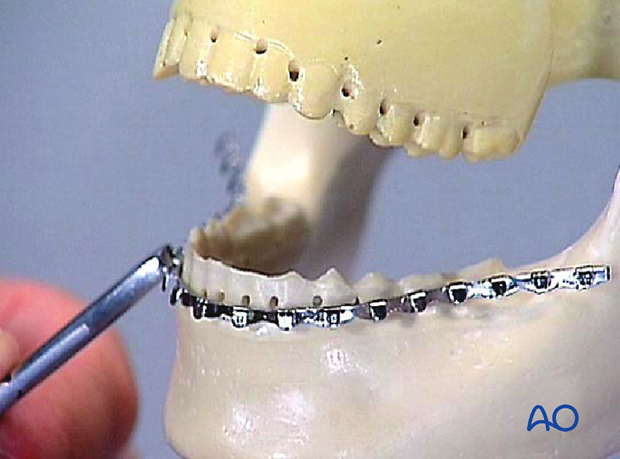
The bar should be trimmed to allow ligation to as many teeth as possible. The bar should not extend past the most distal tooth or protrude into the gingiva as this will be a source of irritation to the patient.
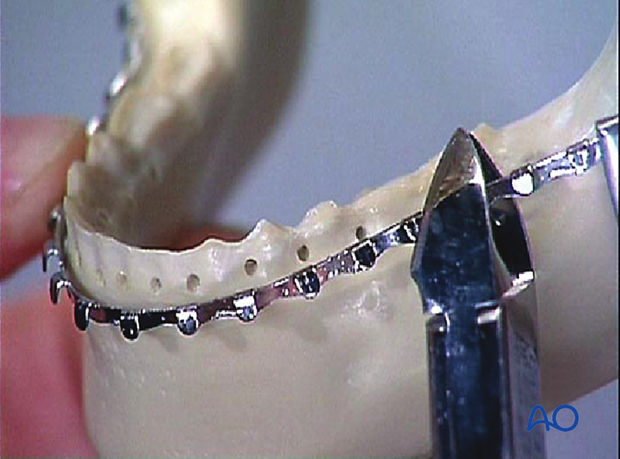
Bar position
Hooks are placed facing away from the occlusal surfaces and symmetrically in the upper and lower jaw to achieve properly directed forces on both bars when the patient is placed in MMF. This symmetry is essential for functional training with elastics.
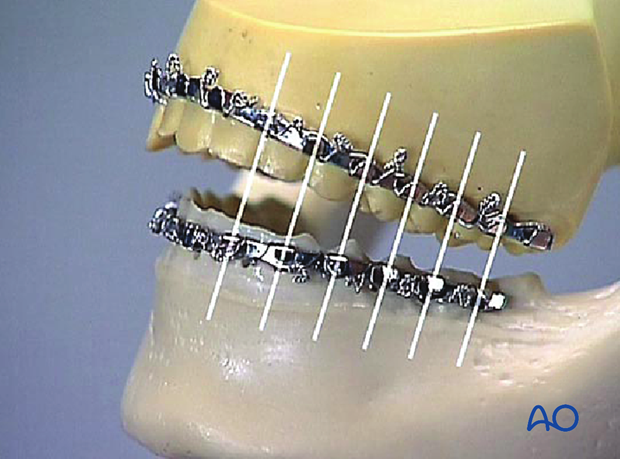
Bar fixation
Ligature preparationTo fix the arch bar in place, prepare a ligature in the premolar region of each side. The wire ends should not damage the surrounding soft tissues.

Position the arch bar with one end of the wire above the arch bar and the other end below it.
Secure the arch bar by twisting the circumdental wire using a wire needle driver.
Always twist the wire in a clockwise direction.
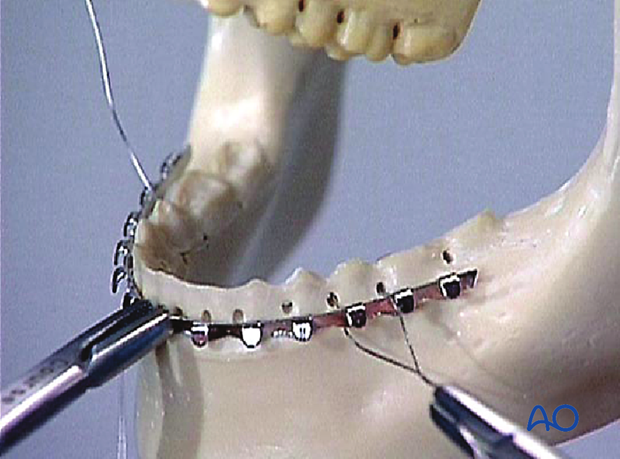
Cut the wire with the wire cutter and turn the ends (rosette) away from the gingiva to prevent damage.
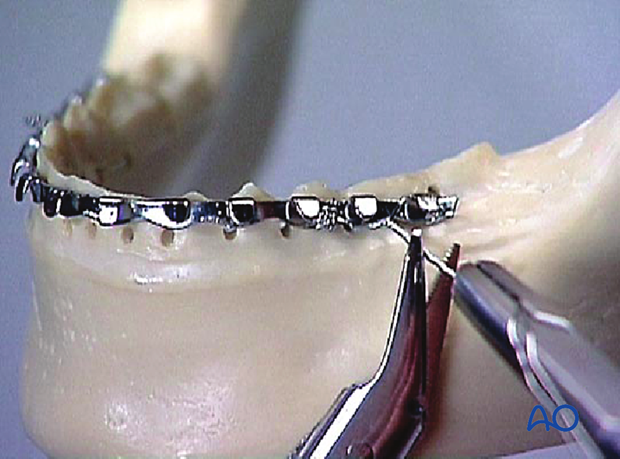
Ensure the wire rosettes do not protrude away from the arch bar, which will irritate the soft tissue.
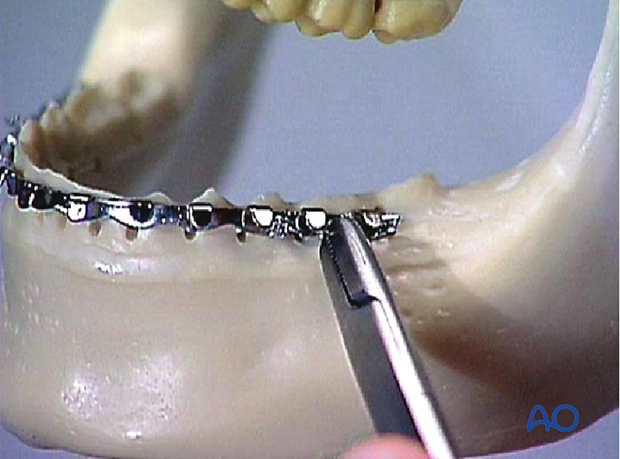
The photograph shows arch bars applied to the mandible and maxilla.
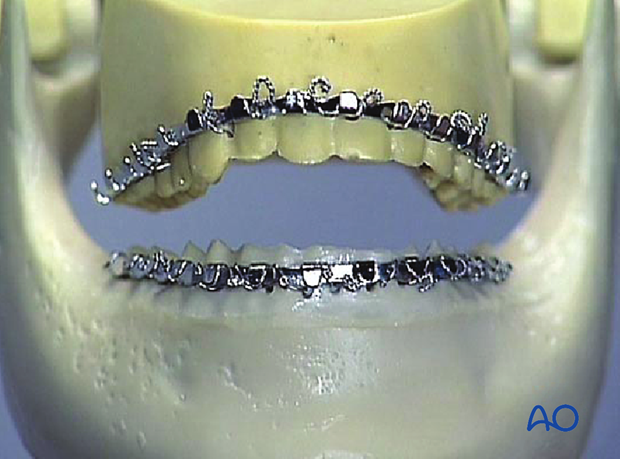
Maxillomandibulary fixation (MMF)
General considerationsMaxillomandibulary fixation (MMF) can be used either intraoperatively to establish the correct occlusion or as part of postoperative management of the patient's injury. MMF may be accomplished with wires or training elastics depending on the overall treatment plan for this patient.
The wire loop is placed over the arch bar's maxillary and mandibular hooks, and the wire loop is tightened.
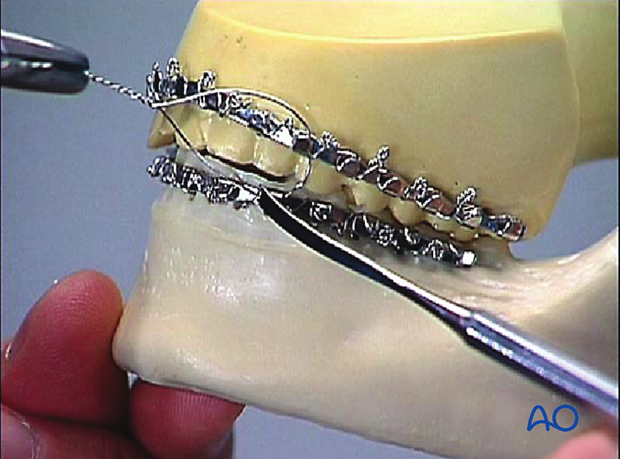
MMF completed with wire fixation. At least three wires are required to provide stable fixation (a posterior wire loop on each side, and an anterior wire loop).
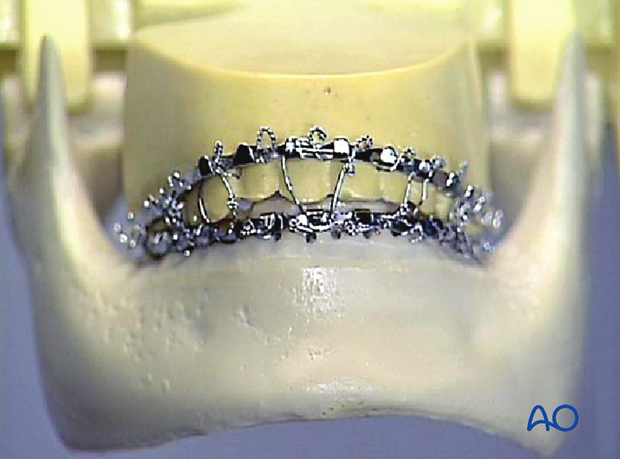
Some surgeons prefer MMF with elastics for intraoperative management of the occlusion. Additionally, postoperative training elastics can be used to manage condylar fractures.
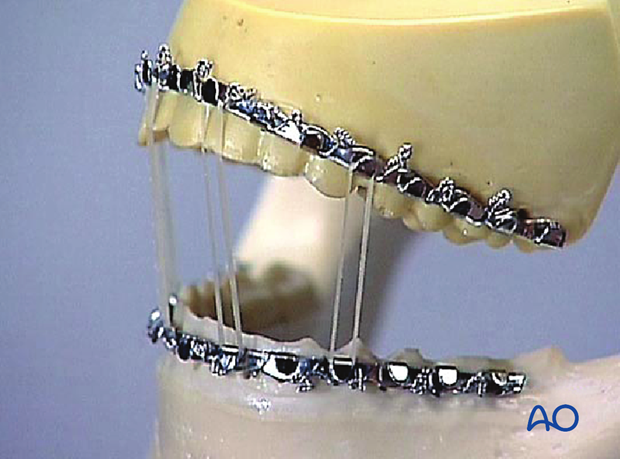
2. Other methods
Ernst ligatures
Click here for a description of the Ernst ligature application.
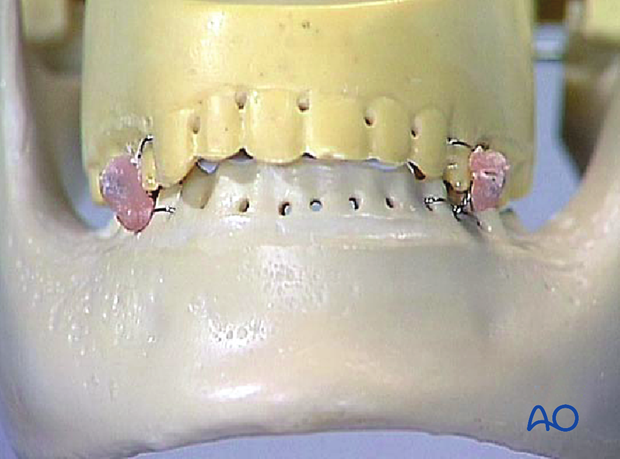
Bone supported devices
Click here for a detailed description of bone-supported devices and their application.
